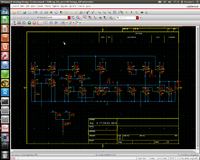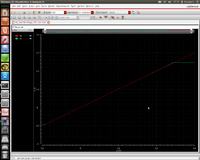rishabh_31ec
Member level 1
Hi, I am designing 4 stage NGCC operational amplifier in TSMC 180nm process using gm/Id methodology ( CADENCE, mixed signal design domain). I have designed upto third stage by keeping the MOSFETs in moderate inversion taking gm/Id = 7~10. Everything is fine but there is a problem regarding ICMR( Vdd = 1.5V & Vss = 0V).
When I tied both the input together and vary the dc voltage from -0.12V to 0.43V, all the transistors remain in saturation ( only upto second stage ),but after third stage this range compress too much. (When I did DC analysis, I found that in third stage Vds drops too much below Vdsat.)
What is the exact solution? How can I improve my Input Common Mode Range.
Please reply and resolve my problem.......
When I tied both the input together and vary the dc voltage from -0.12V to 0.43V, all the transistors remain in saturation ( only upto second stage ),but after third stage this range compress too much. (When I did DC analysis, I found that in third stage Vds drops too much below Vdsat.)
What is the exact solution? How can I improve my Input Common Mode Range.
Please reply and resolve my problem.......




